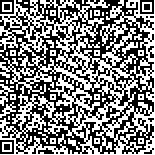| 摘要: |
| [摘要] 目的 研究犁田法分离中重度宫腔粘连的临床效果。方法 选取2016-08~2018-08该院收治的68例确诊为中重度宫腔粘连患者作为研究对象,采用随机数字表法将患者分为对照组和研究组,每组34例。对照组患者使用宫腔电切镜用电能器械分离宫腔粘连。研究组患者则使用HEOS型非能量宫腔镜中的3 mm硬性单关节剪做犁田式分离。比较两组手术时间、术中出血量、术后宫腔镜复查宫腔情况、术后月经变化情况及术后生殖预后情况。结果 研究组的手术时间、术中出血量少于对照组,术后月经量多于对照组,差异有统计学意义(P<0.05)。研究组的术后治疗效果显著优于对照组(P<0.05),术后6个月宫腔粘连程度显著轻于对照组(P<0.05)。研究组患者随访期间复发率低于对照组,妊娠率高于对照组,差异有统计学意义(P<0.05)。结论 使用HEOS型非能量宫腔镜中的3 mm硬性单关节剪做犁田式分离宫腔粘连效果更好,不仅可以降低对子宫内膜的二次伤害,还能提高远期治疗效果,降低复发率,提高患者再妊娠率,安全性好,可在临床上广泛推荐应用。 |
| 关键词: 犁式分离宫内粘连 中重度宫腔粘连 宫腔电切镜 应用效果 |
| DOI:10.3969/j.issn.1674-3806.2019.09.13 |
| 分类号:R 713.4 |
| 基金项目:钦州市科学研究与技术开发计划项目(编号:201714304) |
|
| Clinical study on the plowing separation of moderate to severe intrauterine adhesions |
|
RUAN Yu-ling, LI Ben-ben, LIU Mei
|
|
Department of Gynecology, the First People′s Hospital of Qinzhou City, Guangxi 535000, China
|
| Abstract: |
| [Abstract] Objective To study the clinical effect of plowing method on separating moderate to severe intrauterine adhesions. Methods Sixty-eight patients with moderate to severe intrauterine adhesions were selected in our hospital from August 2016 to August 2018. The patients were randomly divided into control group and study group by random number table method, with 34 cases in each group. The patients in the control group were treated with hysteroscopy separation of uterine cavity adhesion by electric energy instrument, while the patients in the study group received the 3 mm rigid single-joint scissors in the HEOS non-energy hysteroscopy for plowing separation of intrauterine adhesions. The operation time, intraoperative bleeding, postoperative reexamination results of uterine cavity using hysteroscopy, postoperative menstrual changes and postoperative reproductive prognosis were compared between the two groups. Results The operation time of the study group was significantly shorter than that of the control group(P<0.05). The volume of intraoperative bleeding of the study group was significantly less than that of the control group(P<0.05). The menstrual blood of study group was significantly more than that of control group(P<0.05). The curative effect of the study group was significantly better than that of the control group(P<0.05). The degree of intrauterine adhesion 6 months after operation in the study group was significantly less than that in the control group(P<0.05). During the follow-up period, the recurrence rate of the study group was significantly lower than that of the control group(P<0.05). The pregnancy rate of the study group was significantly higher than that of the control group(P<0.05). Conclusion Using the 3 mm rigid single-joint scissors in the HEOS non-energy hysteroscopy for plowing separation of intrauterine adhesions has a better effect, which can not only reduce the secondary injury to the endometrium, but also improve the long-term treatment effect, reduce the recurrence rate, and improve the probability of pregnancy in the patients, which is safe and widely recommended in clinical practice. |
| Key words: Plowing separation of intrauterine adhesions Moderate to severe intrauterine adhesions Electrosurgical hysteroscopy Application effect |

